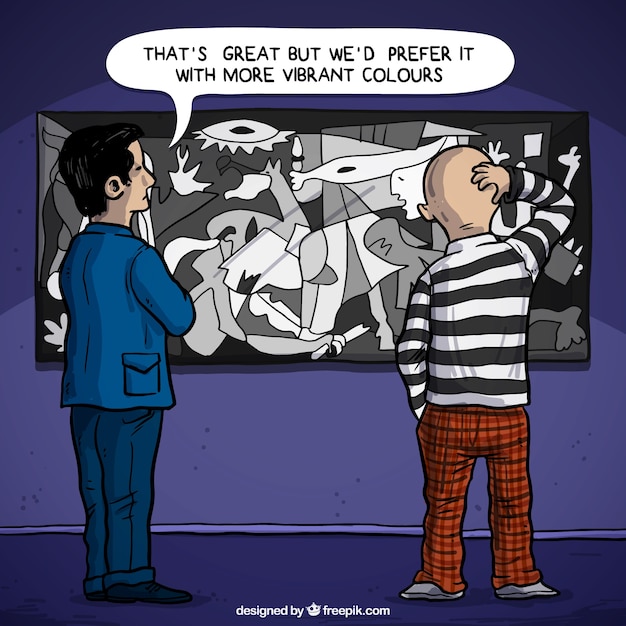Picasso – Fascinating Facts about the Legendary Artist

Picasso was born on October 25, 1881, in the city of Malaga, Spain.
Picasso’s full name was Pablo Diego José Francisco de Paula Juan Nepomuceno María de los Remedios Cipriano de la Santísima Trinidad Ruiz y Picasso.
Picasso’s father was an artist and art professor, which inspired him to pursue a career in art.
Picasso exhibited his artistic talent from a very young age, completing his first painting at the age of nine.
Picasso’s first word was reportedly pencil.
Picasso was a prolific artist, creating an estimated 50,000 pieces of art during his lifetime.
Picasso loved animals and often had pets, including a couple of monkeys.
Picasso had a distinct personal style, characterized by vibrant colors, distorted shapes, and abstract forms.
Picasso co-founded the art movement called Cubism, along with Georges Braque.
Picasso’s most famous painting is Guernica, which depicts the horrors of the Spanish Civil War.
Picasso was known for his incredible work ethic, spending long hours in his studio creating art.
Picasso was a well-known womanizer, often having multiple romantic partners at the same time.
Picasso was known to work across various mediums, including painting, sculpture, drawing, ceramics, and printmaking.
Picasso’s artistic career spanned over seven decades, making him one of the most influential artists of the 20th century.
Picasso’s art has been exhibited in countless museums around the world, attracting millions of visitors.
Picasso – Fascinating Facts about the Legendary Artist part 2
Picasso once said, Every child is an artist. The problem is how to remain an artist once we grow up.
Picasso was interested in African and Oceanic art, which greatly influenced his artistic style.
Picasso collaborated with other artists, such as Henri Matisse and Salvador Dalí, on various projects.
Picasso was a left-handed artist, which is often evident in his brushwork and composition.
Picasso had a unique way of drawing faces, often featuring multiple perspectives in a single portrait.
Picasso was involved in the Surrealist movement and experimented with dreamlike and symbolic imagery in his artwork.
Picasso’s Blue Period, which lasted from 1901 to 1904, was characterized by melancholic and monochromatic artworks.
Picasso’s Rose Period followed his Blue Period, featuring warmer tones and more optimistic subjects.
Picasso was a fan of bullfighting and incorporated bullfighting imagery into many of his artworks.
Picasso’s sculptures revolutionized the medium, using unconventional materials and techniques.
Picasso’s art often reflected his personal experiences and emotions, serving as a therapeutic outlet for him.
Picasso’s art has been used as inspiration for numerous films, plays, and literary works.
Picasso was fascinated by classical art and created many pieces inspired by ancient Greek and Roman sculptures.
Picasso’s artwork has broken several auction records, with one painting selling for over $179 million.
Picasso was a pacifist and protested against war through his art.
Picasso designed stage sets and costumes for various theater productions.
Picasso’s studio, known as the Bateau-Lavoir, was a gathering place for artists, writers, and musicians in Paris.
Picasso’s lovers and muses played significant roles in his life and art, influencing his creative process.
Picasso was a skilled ceramicist, creating unique pottery and ceramic sculptures.
Picasso’s artistic style constantly evolved throughout his career, never conforming to one particular aesthetic.
Picasso’s work is often divided into different periods, such as the Analytic Cubism, Synthetic Cubism, and Neoclassical periods.
Picasso was a known eccentric, often wearing unusual clothing and unconventional hairstyles.
Picasso had many artistic rivals and critics, but he never let their opinions deter him from pursuing his artistic vision.
Picasso’s art has been used in commercial products, such as posters, clothing, and home decor.
Picasso’s self-portraits provide fascinating insights into his changing appearance and emotions over time.
Picasso was fascinated by the human body and portrayed it in various abstract and surreal ways.
Picasso’s studio was filled with countless art supplies, including brushes, palettes, and paint tubes.
Picasso’s love for African art led him to be an avid collector of tribal masks and sculptures.
Picasso once said, Art is the lie that enables us to realize the truth.
Picasso’s legacy continues to inspire artists and art enthusiasts worldwide, keeping his innovative spirit alive.

